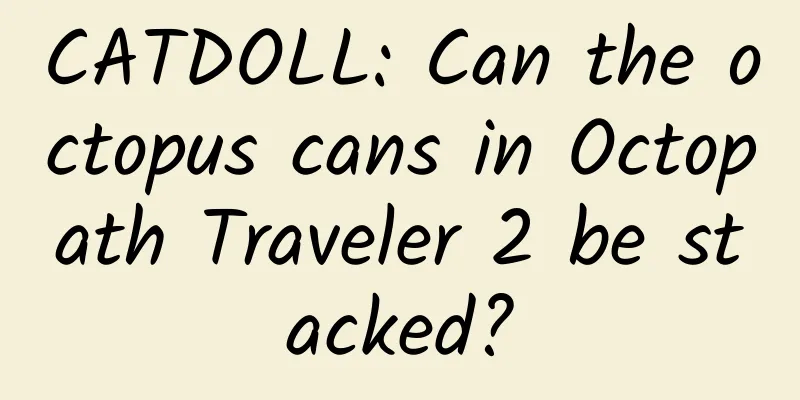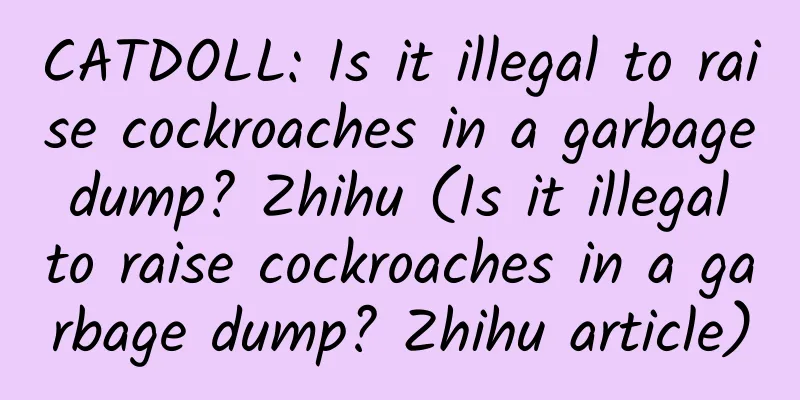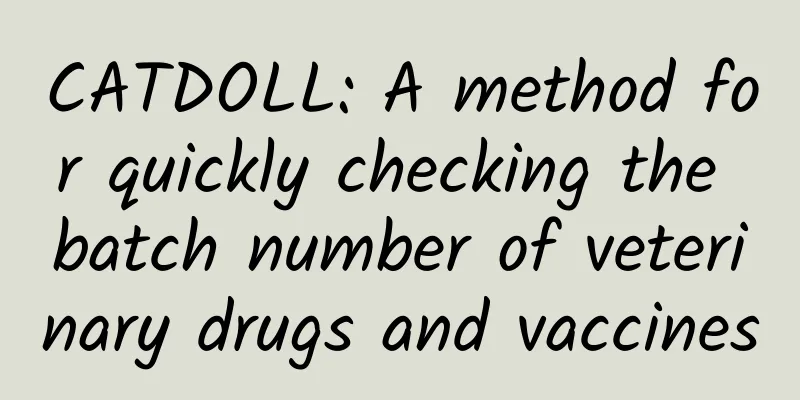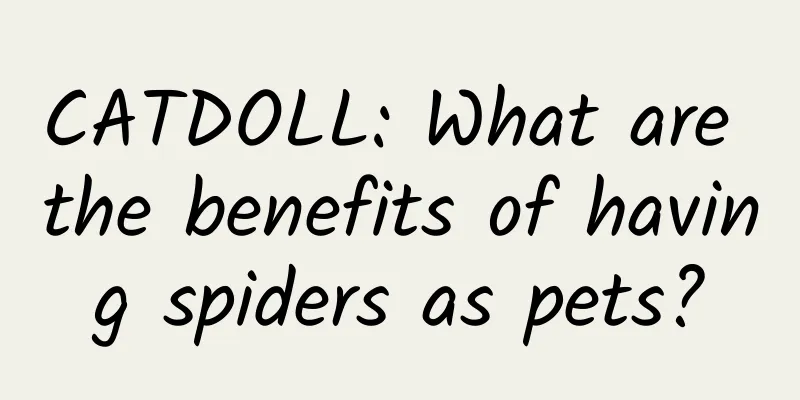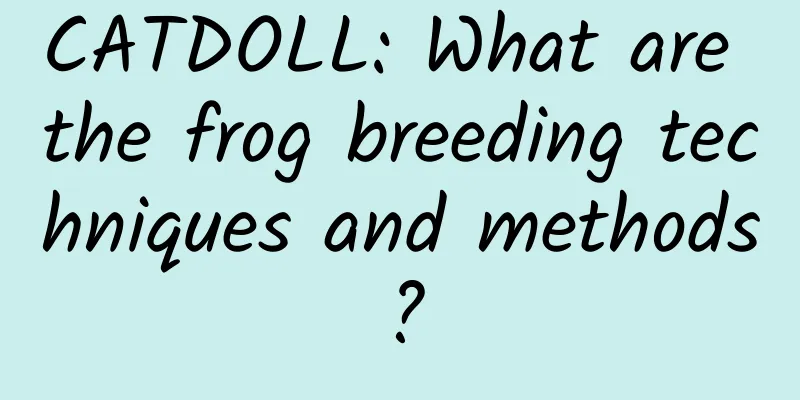CATDOLL : CATDOLL: What are the methods of growing kelp?
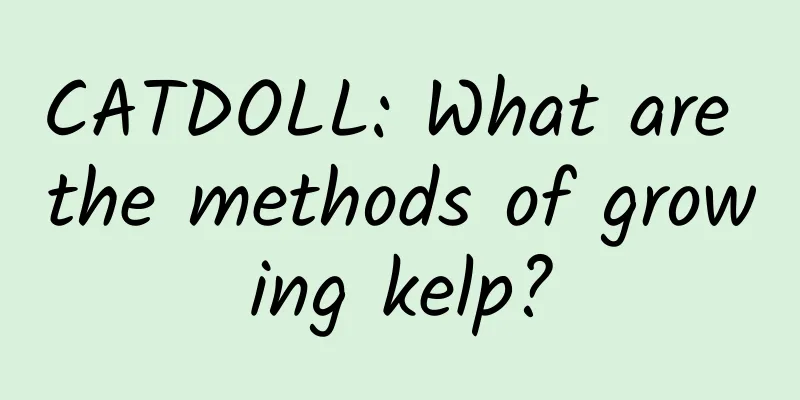
|
Kelp is a vegetable with high nutritional value and certain medicinal value. It is rich in iodine and other mineral elements, but many people don't know how to grow kelp. The following is the kelp planting technology I have made for you, I hope it will be useful to you. Kelp cultivation technology Sea area selection The aquaculture sea area should be set up in the sea area without industrial "three wastes" and agricultural urban life and medical waste pollution. The bottom of the sea area is preferably flat sandy bottom or muddy bottom. For the uneven rocky reef seabed, raft aquaculture can be adopted. The water depth is preferably 8-30m, among which the water depth of 15-25m is the best, which is a high-yield area. The current velocity is 0.17-0.7m/s, preferably 0.41-0.7m/s. The transparency change range is preferably less than 3m. Raft culture Breeding raft type Basically, there are two types: single raft and double raft. Single raft is the main type of aquaculture raft in China, because each raft is independently designed and has better resistance to wind and waves. Setting up the breeding raft It requires a reasonable layout to make full use of the productivity of the sea area and provide a suitable living environment for kelp. First of all, safety must be guaranteed to facilitate management and operation. Generally, 30-40 rafts are divided into one area, and the areas are arranged in a "field" shape. The distance between rafts for flat farming is preferably 6-8m. When considering the raft direction, one of the wind and the flow is dominant. At present, downstream farming is promoted, and the raft direction is parallel to the flow direction. If "one-stop" farming is adopted, the raft direction and the flow direction must be perpendicular. Single raft and structural materials A single raft is composed of a floating rope, a peg cable, a peg, a float, a suspension rope, and a seedling rope. Floating rope: The floating rope is generally about 60m long, and is shorter in sea areas with strong winds and waves. The diameter is 1.5-2.0cm. The materials used are generally polyethylene and polypropylene ropes. These materials are economical and durable, and have strong corrosion resistance and tensile resistance. Pegs and pegs: Pegs are used to fix the raft. Their length varies with the water depth. Generally, they are twice the water depth. In areas with strong winds, waves and currents, they are 2.5-3 times the water depth. The materials used are the same as those of the floating rope. Pegs are mainly wooden pegs. In areas where pegs cannot be used, they are used with a trolley. They usually weigh more than 1,000 kg and have a radius of 50 cm. Float: Usually a plastic float, which has great buoyancy, light weight, and is strong and durable, making it the most ideal material. Seedling culture In breeding production, seedling separation means picking the seedlings growing on the seedling attachment and then clamping them on the seedling rope. After this process, they will be grown. Preparation work before transplanting Seedling rope: It is the growth base of kelp and has to bear the weight of the algae. The seedling rope needs to be durable, thin, and moderately tight so as not to damage the growing part. The length of the seedling rope is determined by different sea conditions and cultivation methods. Hanging rope: The material is the same as the seedling rope, which is polyethylene rope. The length of the hanging rope depends on the water depth and transparency of the sea area. In the north, it is generally about 2m long. Dropping stones: In sea areas with strong winds and waves, it is necessary to tie the hanging rope with dropping stones to prevent the seedling rope from being impacted by wind, waves and currents and floating on the sea surface, causing strong light stimulation and entanglement. Dropping stones generally weigh 0.25kg, and large ones weigh 0.5-1.0kg. Tools: Tools for separating seedlings include seedling clamps, seedling transport baskets, seedling hanging baskets, etc. All tools must be washed with seawater before use. Seedling separation technology Transplanting time: In the north, transplanting usually starts in early November. Seedling separation specifications: Generally, seedlings can be separated when they grow to 10cm, and 12-15cm is the most suitable. The size of the seedlings should vary according to the time of day. The early seedlings can be slightly smaller, 10-12cm, 15cm in the middle stage, and more than 20cm in the late stage. The standard for seedling separation is: "seedling early, separate good seedlings, and separate large seedlings." Seedling separation operations: including picking, transporting, clamping and hanging seedlings. ① The work of removing seedlings should be done carefully. Generally, the seedlings should be removed frequently and less frequently to improve the quality of the seedlings and also increase the utilization rate of the seedlings. ② The seedling transportation tools should be soaked or wetted with sea water to avoid abrasion of the seedlings and sun exposure; the seedlings should not be squeezed too much against each other, so the method of loading less and transporting more frequently should be adopted to shorten the transportation time as much as possible and avoid backlogs. ③ When clamping the seedlings, try to make sure that each seedling rope is of uniform size. Do not clamp them too deep or too shallow. If you find that the seedlings have fallen, replace them in time. ④ When hanging seedlings, try to reduce the accumulation time on land. Generally, the flat hanging method is adopted. The water depth is set to 1m in the initial stage of hanging seedlings, and the water layer is raised after a period of time. Marine aquaculture The period from seedlings to the thickening of kelp for harvesting is called the growing period, which takes 6-7 months in the northern regions. (1) Aquaculture methods: The main aquaculture methods in China are horizontal aquaculture and vertical aquaculture. There are also vertical rotation aquaculture, "one-stop" aquaculture, and aquaculture among shellfish and algae. (2) Density: Different sea areas have different suitable aquaculture densities, which are directly related to aquaculture yields. Too dense or too sparse will not achieve the best aquaculture results. (3) Layer adjustment: In the early stage of cultivation, deep hanging and seedling separation can be carried out in the first type of sea area, and the initial hanging in the northern sea area is 80-120cm; in the second and third type of sea areas, dense hanging can be carried out first for temporary cultivation and then for seedling separation, or deep hanging and seedling separation can be carried out. In the middle stage of cultivation, pay attention to the following work: First, adjust the water layer. The water layer in the northern sea area is adjusted to 50-80cm; second, evacuate the seedling rope. When the kelp grows to 100-120cm, it should be evacuated, the seedling rope and raft should be moved, the stacked hanging should be changed to single hanging, and the vertical cultivation should be changed to horizontal cultivation. Third, inversion should be carried out. In order to allow the kelp to receive light in turn, it should be inverted at the appropriate time, that is, when the length of the kelp on the upper and lower parts of the seedling rope is close and when the kelp in the lower layer just begins to change to normal brown, white-brown and yellow. The number of inversions depends on the situation. (4) Tip cutting: Cutting off more than 1/4 of the tip of the kelp leaf can improve the quality and yield of the kelp, prevent the occurrence of kelp disease and rot, reduce the load on the rack, and improve the safety factor. Generally, 40% of the total length of the kelp leaf should be cut off for early and mid-term seedlings, and 30% should be cut off for late seedlings. In the north, this is usually done in late March or early April. (5) Fertilization and daily management: Fertilization: mainly nitrogen fertilizer. The first is hanging bag fertilization, the second is splashing fertilizer, and the third is immersion fertilizer. In order to improve fertilizer efficiency, it is also necessary to pay attention to: reasonably arrange the amount of fertilizer. In the northern sea area, the total amount of fertilizer is 15% in the summer seedling temporary rearing stage, 35% from seedling transplanting to the end of December, 35% in March and April, and 15% in the later period. Other daily management work such as tidying up the raft, adding buoyancy and replacing the lifting rope should be carried out in time to ensure the safety factor at sea. Harvest and storage It is harvested in summer and autumn, fished out of the sea and sun-dried. Common knowledge about diseases and pests of kelp White rot This disease usually occurs at the tip of the leaf blade. The algae changes from brown to yellow, light yellow, and even white, and then gradually spreads from the tip to the base, from the leaf edge to the middle band. At the same time, the white rotten parts fall off in large quantities. In severe cases, the algae in the concave and convex parts will all rot away, leaving only the straight parts with dark color and tough texture. Some small kelps will completely rot away, and the white rotten parts are sometimes reddish-brown. Similar diseases often occur during indoor artificial seedling cultivation. Because the white rotten part of the white tip disease generally only stays at the tip of the leaf and does not spread to the base of the leaf, it will not cause great harm. White rot of kelp occurs mostly in May and June, and is very easy to occur in the case of long-term drought, long-term excessive transparency, and long-term lack of nutrition. The conditions for occurrence are opposite to those of green rot of seaweed. It mostly occurs on kelp in sea areas with poor water quality, and rarely occurs in fertile water areas; the disease is serious in shallow water layers and the upper part of seedling ropes, shallow water areas and the central areas of large-scale breeding; the algae with small straight parts and large leaf margins are seriously affected. Prevention and control measures The main causes of white rot in kelp are excessive light and long-term lack of fertilizer. When the disease occurs, the fucoxanthin and chlorophyll in the algae cells are decomposed together, so the algae turn white and die. Soaking with 0.05% or 0.01% ammonium sulfate can achieve a preventive effect. During the rearing period, pay attention to dense cultivation in the early stage, and thin out when it grows to about 1m. According to the different growth stages of kelp, adopt measures such as adjusting light intensity, washing floating mud, spraying fertilizers such as ammonium nitrate and ammonium sulfate, and adjusting water layers to prevent and control green rot, white rot, and spot white rot. Strengthen management and enhance the disease resistance of algae; the breeding sea area should be reasonably laid out and the water flow should be kept unobstructed; according to the sea conditions, the light should be adjusted in a timely and reasonable manner. In the case of white rot of kelp, the stocking water layer should be lowered, fertilizers should be applied, and the tips should be cut and washed. Green rot The green rot of kelp usually starts from the edges of the leaf tips, which turn green, become soft, rot and fall off. Then the entire tip turns green, softens and rots, and gradually spreads and expands. In severe cases, most of the leaves can rot away, or even all of them. The rotting speed is also quite fast, and most of them can rot away within a week. In severe cases, the entire kelp can rot away. When raising seedlings indoors, this disease often occurs on the algae of small seedlings that are insufficiently illuminated, too densely, or pressed under large seedlings. When aquaculture is carried out at sea, this disease usually occurs in April or May when the weather is rainy, foggy, insufficiently illuminated, or the seawater is turbid. From each seedling rope, it is almost always the kelp at the bottom of the rope that starts to rot green, and the deeper the water layer, the more serious it is. From the perspective of stocking density, the higher the density, the more rotten it is; the central area of large-scale aquaculture and the nearshore area with small tides are more rotten. The green rot of seedlings cultivated indoors and kelp cultivated at sea is caused by long-term lack of light. Due to long-term lack of light, photosynthesis weakens or even stops, and the organic matter produced is insufficient for the body's consumption. As a result, the vitality of cells gradually weakens, leading to protoplasm destruction and eventual death. In this process, water-soluble fucoxanthin is first decomposed, revealing chlorophyll, making the leaves appear green and sticky and rotten. Prevention and control measures The measures to prevent and control green rot in indoor seedling cultivation are: appropriately increase the light intensity to enhance the vitality of seedlings; increase the amount of new water, increase the flow rate, and improve the living environment of seedlings; remove large seedlings so that the small seedlings under the large seedlings can also get sufficient light. If the disease has already occurred, the water temperature can be lowered to inhibit the reproduction of microorganisms and reduce the occurrence and development of the disease. At the same time, washing should be strengthened to wash away the green rot algae in time to prevent it from spreading. The measures to prevent and control green rot in marine kelp culture are: improve light and increase the vitality of algae. The stocking water layer should be adjusted in time, inverted appropriately, cut the tip and collect in time, thin the seedling ropes, and strengthen washing. Characteristics of Kelp The leaves of kelp are like wide bands, gradually narrowing at the tip, generally 2 to 5 meters long and 20 to 30 centimeters wide (kelp growing on the seabed is smaller, 1 to 2 meters long and 15 to 20 centimeters wide). The leaf edges are thin and soft, with wavy folds, and the base of the leaves is connected to the holdfast by a short columnar petiole. The whole body of kelp is olive brown, which turns dark brown and black brown after drying, with white powdery salt on it. The surface of dried kelp has white powder. The iodine and mannitol contained in kelp, especially mannitol, are in the form of white powder attached to the surface of kelp. The kelp without any white powder is of poor quality. Secondly, the kelp with wide and thick leaves, dark green or slightly yellow in purple, and no withered and yellow leaves is the best. In addition, the kelp after processing and bundling should be free of sand and impurities, clean and mildew-free, and non-sticky. The role of kelp Weight loss effect Kelp, also known as Jiangbaicai, is a species of seaweed that grows on rocks on the seabed and is mostly cultivated in coastal areas. Kelp contains a lot of nutrients, including potassium, iodine and other minerals, which are very nutritious to the human body. Did you know that kelp can actually help you lose weight? Seaweed contains a lot of iodine, and it has the reputation of "the crown of alkaline food". A few years ago, some places said that many people suffer from thick necks because they have been eating salt instead of iodized salt. In fact, thick neck is caused by hypothyroidism. Iodine can promote the function of the thyroid gland, which is very helpful for calorie consumption and body metabolism, thereby achieving the goal of weight loss and weight control. Potassium is also a major focus of seaweed nutrition. Many people ignore potassium. Ignoring potassium means ignoring one-third of nutrition. Potassium is a mineral that can eliminate body fat. It can help balance the sodium in the body. If there is too little potassium in the body, the sodium-potassium balance in the body will be unbalanced. The excess sodium will flow away water, causing cell edema, making it difficult to lose weight and the floating fat more obvious. However, if the body intake of potassium ions is sufficient, sodium ions will not retain excess water. Therefore, potassium ions can help the body metabolize excess water, eliminate edema, improve floating meat and modify the curve. Seaweed contains these minerals and is helpful to the body. Moreover, kelp contains a large amount of unsaturated fatty acids and dietary fiber, which can quickly remove excess cholesterol from the blood vessel walls and help the secretion of gastric juice to achieve the purpose of digestion, which is very helpful for gastrointestinal motility. Seaweed foods are not just edible kelp. There are many other types of seaweed, such as red algae, kelp (a larger seaweed than kelp), etc. Concentrated tablets or concentrated liquids of these algae are sold on the market. You can also buy natural kelp and cook it at home. However, when cooking any helpful food, remember! Try to use steaming or boiling methods such as less salt, less sugar, and less oil to avoid losing the original weight loss purpose. Kelp is low in calories and full of colloids and minerals. Kelp is also rich in soluble fiber, which is easier to digest and absorb than ordinary fiber, helping the body to defecate smoothly. And we can eat kelp as a midnight snack or dessert because it will not make you fat. Hairdressing effect The dryness and growth of a person's hair reflects the body's nutritional status to a certain extent. In addition to the changes in hair caused by physiological aging, it is generally believed that thick, black and shiny hair indicates good nutritional status; on the contrary, sparse, dry, dull hair, and a large amount of hair shedding and breaking are manifestations of poor nutrition. In addition to energy, protein and vitamins, there is another nutritional factor related to hair that cannot be ignored - trace elements. The main reason for yellow hair is the presence of acidosis, while the main reason for white hair is the development of acidosis. Excessive physical and mental fatigue, eating too much sweets, protein deficiency, and especially iodine deficiency can all contribute to the occurrence of acidosis. As we all know, kelp is not only of high nutritional value, but also contains a variety of vitamins, cellulose and minerals. It is also a good medicine for preventing and treating goiter. Kelp is extremely rich in iodine, which is the main raw material for synthesizing thyroid hormone in the body. The luster of hair is formed by the function of thyroid hormone in the body. "Hair quality" and the keratin components contained in it must be absorbed from sulfur-containing proteins, and protein is an important substance that makes hair shiny. In addition to iodine, calcium and sulfur, kelp also contains iron, sodium, magnesium, potassium, cobalt, phosphorus, mannitol and vitamins B1, B2, C and other substances. These nutrients are very beneficial to hair care. Therefore, eating kelp regularly has special effects on the growth, moisture, blackness and brightness of hair. Buying Tips High-quality kelp is thick, long and wide, dry, dark brown or dark green in color, and has no cracks or yellowing on the edges. Foaming method Kelp contains alginate and alginic acid. These substances are insoluble in water, but have strong water absorption and swelling properties. Once absorbing water, a sticky colloid will appear on the surface of the kelp, which can prevent water from further infiltrating, so it is difficult to soak the kelp. At the same time, most of the iodine contained in the kelp is on the surface, and soaking for too long will cause the iodine to be lost. Therefore, the best way is to dry steam it. Spread the kelp, steam it in a steamer for half an hour, and then rinse it with water. It will be tender and crisp. If you boil it with water, you can add a little alkaline noodles or baking soda to the water, because the kelp glue is easily dissolved by alkaline substances. When boiling, you can pinch it with your hands to check the hardness and softness so as to control the heat. After the kelp is soaked, you can add a little vinegar when eating it to make it softer and crisper. Delaying aging Kelp is rich in calcium and iodine, which help the synthesis of thyroid hormone. The combination of these two elements can not only beautify the skin, but also delay aging. Brain Health Kelp contains taurine, which plays a very important role in the development and growth of children's brains. The brown surface of kelp also contains a kind of glutamic acid that promotes children's development. Its content is 30 times higher than that of liver oil, which can nourish the brain and help children grow healthily. Stomach "cleaner" Kelp is rich in cellulose, which can clear out waste and toxins in the intestines in a timely manner. Therefore, it can effectively prevent the occurrence of rectal cancer and constipation. After reading about the cultivation technology of kelp, you can also read: 1. 2018 Grade 1 Biology Final Exam Paper 2. How to plant aquatic plants in fish tanks 3. Prospects of Stevia Cultivation in my country 4. 2017 Expository Reading Questions and Answers 5. How to grow kelp |
<<: CATDOLL: What kinds of river fish are there?
>>: CATDOLL: Why doesn't the clams spit out the sand after adding sea crystals?
Recommend
CATDOLL: Is the red on the shrimp's back the intestine?
I found it after cooking. Was yours cut in half? ...
CATDOLL: How to keep silkworms from getting sick (How to keep silkworms from getting sick)
1. What should we pay attention to when raising s...
CATDOLL: Greenhouse leech raising technology (greenhouse leech raising technology video)
1. Complete set of techniques for raising leeches...
CATDOLL: Scientific feeding methods for pregnant cows
Scientific feeding methods for cows during pregna...
CATDOLL: What eats cockroaches? Can I keep them alive? (What eats cockroaches? Can I keep them alive?)
1. What kind of spiders can eat cockroaches? The ...
CATDOLL: Is there any nutritional difference between wild scorpions and farmed scorpions?
1. Is there any nutritional difference between wi...
In what situations do cats need to be dewormed?
The most direct sign that a cat needs external de...
CATDOLL: Where are the sturgeon and salmon farms in Shidu?
There is a sturgeon breeding base at Wudu (Xina i...
CATDOLL: What drawing tools do you need to raise snails? (What drawing tools do you need to raise snails?)
1. How to raise small snails? We all like to keep...
CATDOLL: Is it illegal to raise ants? Zhihu novel (Is it illegal to raise ants? Zhihu novel full text)
1. Is it illegal to raise red fire ants? It is il...
CATDOLL: How to come up with a good feed name?
Choosing a good feed name is crucial to the promo...
CATDOLL: What was the spider called when it was young? What is it called when it grows up? (What was the spider called when it was young?)
1. What is the name of the evolved spider? In the...
What to do if the cat is lost
How to solve the problem of lost cat 1. Look for ...
CATDOLL: Many people don’t know the environmental requirements for clam farming. What are the environmental requirements for clam farming?
Clams use their well-developed axe feet to dig sa...
CATDOLL: What fish is the most suitable for co-breeding whiteleg shrimp in high-level intensive ponds? Which marine fish feeds exclusively on shrimp feces and mud?
1. What fish is the most suitable for co-breeding...

